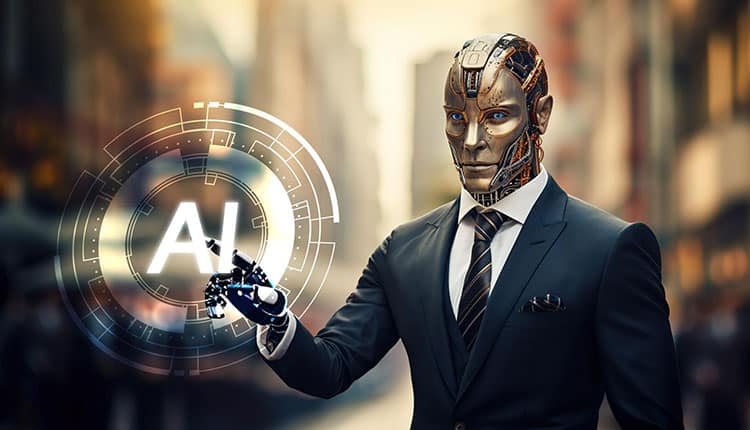By Bareena Irwin Tamang, L&D Lead, AscentHR
Artificial intelligence (AI) and predictive algorithms have a significant impact on several aspects of talent management, including recruitment and onboarding, employee engagement, performance management, learning and development, and employee retention.
This article aims to offer a glimpse into AI-powered HR processes, specifically into the talent management sphere. Talent management is a broader term that encompasses the entire employee lifecycle, including performance management, employee development, retention, and succession planning. Talent management addresses the overall management and development of existing talent within a company. Numerous prominent entities within the Human Resources Outsourcing (HRO) sector have embraced advanced AI-driven solutions to revolutionise performance management. Across the industry landscape, various organisations have recognised the transformative potential of artificial intelligence in optimising performance management processes. These forward-thinking companies are embracing innovation and efficiency in their operational paradigms by strategically deploying AI tools and systems to augment multiple facets of performance management like:
Performance Analytics for informed decision-making
Performance management systems driven by AI and predictive algorithms can boost HR analytics and offer valuable insights into employee performance from multiple perspectives. This can translate into more accurate performance evaluations and lead to increased efficiency. Moreover, technology-driven performance metrics can offer better insights and lead to objective assessments of employees’
performance.
Real-time and personalised feedback for operational efficiency
AI-enabled performance management systems can help organisations go beyond conventional feedback cycles that may typically happen monthly, bi-annually, or annually. AI-powered performance management platforms enable real-time feedback mechanisms, allowing continuous performance assessments and timely interventions. Imagine a wearable device specifically designed for warehouse personnel meant to enhance their productivity at work. Like a fitness wristband that records information about an individual’s physical fitness and activity, the wearable device can track the precise location and hand movement of warehouse employees and nudge them with vibrations. The device triggers these prompts when it identifies that employees are doing something wrong, like when they try to touch or retrieve a wrong package. This device has already been developed and patented by a retail e-commerce giant but is not yet available in the market.
Personalised feedback for continuous improvement
AI-powered talent management tools can generate personalised feedback for employees based on their performance data. This doesn’t mean that AI will remove managers’ role in giving feedback altogether. It can assist managers with better insights, improving accuracy, removing bias, and fostering a culture of continuous improvement and growth.
Quicker Employee recognition
AI-driven performance metrics can speed up certain processes and decisions. For example, it can enable faster identification of high-performers and reward them quickly rather than being confined to annual evaluations. These systems can assist managers in bridging skill differences among team members and even arrive at well-informed plans for managing promotions and compensation.
Objective and predictive performance assessment
Provided the AI model is configured well, giving utmost importance to data transparency, one of the biggest advantages of an AI-enabled system is its ability to evaluate employee performance objectively. The outcome produced by such AI-modeled systems can reduce bias, enhance impartiality, and promote fair and equitable assessments as the results are based on objective data. These systems can also
predict future performance trends based on historical data, helping organisations anticipate challenges and develop proactive strategies.
Learning and development
AI can play a crucial role in employee growth and development aspect as it can deliver personalised learning experiences. For instance, an AI-powered chatbot can provide personalised learning support through adaptive content and customised training recommendations, taking into consideration the individual employee’s learning requirements, preferences, and objectives. Such systems can augment
L&D professionals in facilitating better discussions and improving overall learner engagement.
Employee retention
Keeping track of employees’ sentiments and the overall work atmosphere in an organisation is becoming critical for anticipating employee turnover and taking quick measures to improve employee engagement and retention. To achieve these outcomes, organisations need to gather and analyse massive data from various sources within and outside the organisation to understand the prevailing employee sentiments. An AI-powered system can efficiently process such large amounts of data. For instance, Natural Language Processing (NLP) tools can be deployed to analyse employees’ feedback from surveys and social media platforms, helping organisations address factors causing employee dissatisfaction before they lead to turnover. There are plenty of such platforms and HR tools that can help an organisation keep a pulse of the workforce and devise retention strategies to mitigate employee turnover risks.
Conclusion
The traditional methods of performance evaluations may not be enough to keep pace with the changing business landscape. Organisations need to embrace the AI-driven emerging trends in performance management to remain competitive. However, organisations need to implement these tools and technologies thoughtfully, considering factors such as data privacy and ethical considerations in performance evaluation to ensure that data is being used responsibly. Adopting this business principle can foster transparency in AI-driven decisions. While the benefit of AI for HR is profound, organisations need to maintain a good balance between technology usage and the human touch in managing talent effectively.



